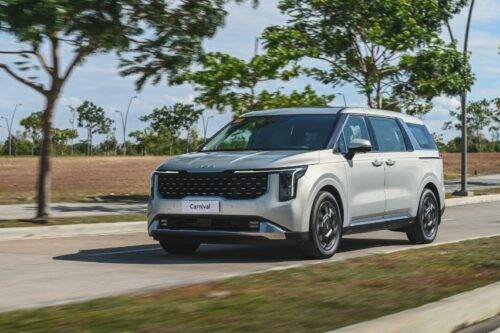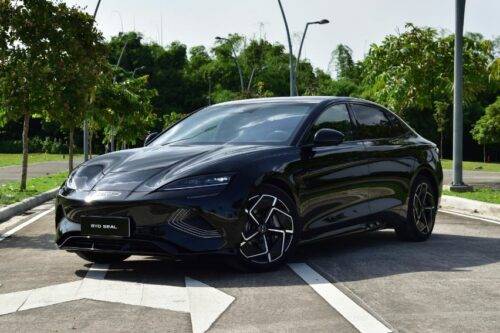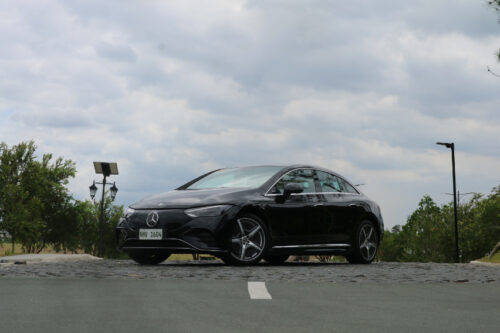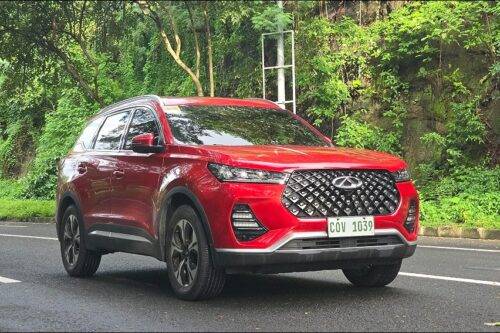Lamborghini looks back on Diablo success in brand's final year of V12

MANILA: The famed 12-cylinder V12 engine that has propelled Lamborghini's most recognizable vehicles for nearly 60 years will be celebrated in 2022. One such model is the Diablo, the first Lamborghini super sports car to be made available with four-wheel drive.
KEY TAKEAWAYS
What are the performance highlights of the Lamborghini Diablo when it received a six-liter V12 in 1999?
The engine's displacement was enlarged to 6.0 liters in 1999, first with the Diablo GT and then with the Diablo 6.0 SE. As a result of enhanced fuel injection calibration, the engine produced 525 horsepower and 605 Nm of torque.Why is 2022 the last year that Lamborghini will make V12 engines?
At the end of 2022, the last Lamborghini Aventador Ultimae will be produced before theThe Diablo was considered to be a series production hypercar when it first appeared because it was so far ahead of its time. The 12-cylinder engine, which was first officially unveiled in January 1990 at Lamborghini Day at the Sporting in Monte Carlo, had a displacement of 5.7 liters at first and later 6.0 liters. It had a maximum power output of nearly 600 horsepower in road versions and 655 horsepower in the GT1 Stradale model for the racetrack, of which only two examples were made.
At the end of 2022, the last Lamborghini Aventador Ultimae will be produced before the "pure" V12 combustion engine ends manufacturing. The successor to the Aventador will start using a new plug-in hybrid V12 engine the following year.
Not merely because of its incredible performance and driving experience, the Lamborghini Diablo has a particular position in the history of Automobili Lamborghini and in the hearts of enthusiasts. The company entered the modern age with this particular model.

In order to replace the Countach, Project 132, as it was known within the company, had to embody the full force of the Sant'Agata-based car manufacturer: appear sporty and muscular while always appealing; deliver the aesthetics for which Lamborghini has always been known; and be future-proof in order to continue to be the fastest production car in the world.
Sandro Munari, a former rally world champion, worked tirelessly on its development, and it showed in the initial tests how well it handled the road. The Lamborghini Diablo also showed during the course of its commercial existence, which lasted until 2001, that it was capable of changing and adapting to the needs of the market and its customers.
The Diablo was a big hit, selling 2,903 copies in the 11 years it was in production.
The 60-degree V12 engine, which was drawn straight from the 1963 3.5-liter engine and then expanded to 5.7 liters, continues to be the Diablo's technological cornerstone. In actuality, the Diablo's initial engine size was the latter. Rear longitudinal position with catalytic converter produced maximum power of 492hp at 6,800 rpm and maximum torque of 580Nm at 5,200 rpm in this arrangement. Lamborghini-Weber Marelli LIE electronic fuel injection was another feature.

The engine's displacement was enlarged to 6.0 liters in 1999, first with the Diablo GT and then with the Diablo 6.0 SE. As a result of enhanced fuel injection calibration, the engine produced 525 horsepower and 605 Nm of torque.
When Audi acquired Lamborghini in 1998, that was the company's turning point. The automaker suddenly had enough funds to create a more sophisticated industrial plan and obtained access to parts and technology they had previously only imagined.
The Diablo was viewed by the new owners as a product that should be kept and improved upon. As a result, the second series of the Diablo was created, which was developed using the brand-new internal Centro Stile. The larger V12 6-liter engine made it faster and more potent than before, and it also featured more opulent finishes and improved dependability for daily driving as a result of stringent quality control during design, testing, and production.

The Lamborghini Diablo's original mechanical setup had a rear longitudinal engine with four chain-driven camshafts, electronic fuel injection, rear-wheel drive, and a mechanical transmission, despite being improved. Only in 1993 was power steering introduced, and the electronics were only used to control the engine. When the Diablo VT, Lamborghini's first four-wheel-drive super sports vehicle, was unveiled in 1993, it immediately set the standard for roadholding and all-weather driving safety.
Since a viscous coupling is used to transfer torque from the rear axle to the front one, "VT" stands for "Viscous Traction". If the rear wheels slip via a viscous coupling and a propeller shaft attached to the front differential, the VT is generally a rear-wheel drive vehicle with up to 20% transfer to the front wheels exclusively under this setup. A further advance for Lamborghini was also made with the VT: an electronically-controlled suspension with a choice of five pre-set operation modes.
The Lamborghini V12 Diablo established yet another new custom by being produced in an open-top form by Lamborghini. Actually, a few hesitant attempts had been made in the past, but they had only been one-offs. The Diablo Roadster made its début in December 1995 with a carbon fiber Targa top that, when lowered, was housed over the engine cover.

Lamborghini returned to racing with the Diablo, thanks to the Super Sport Trophy – later the Super Trofeo – racing championship, where it made its debut in a side race during the 24 Hours of Le Mans in 1996. Thirty-four 550hp Diablo SV-Rs were made for gentlemen drivers competing in one-hour races.
The Diablo was featured in numerous films. One of the most memorable scenes was from the American film “Dumb & Dumber” starring Jim Carrey, Jeff Daniels and the red Diablo in which they arrive to the hotel.
It also appeared in the 2001 film “Exit Wounds,” directed by Andrzej Bartkowiak, with “DMX” Earl Simmons and Anthony Anderson. A 1999 Diablo VT Roadster steals the show in the car showroom scene, which was bought in cash after an exhilarating engine “rev up”.
The V12 hypercar also saw the virtual realm. Finally, in the video game “Need for Speed III: Hot Pursuit,” the featured car is a Diablo SV.
Photos from Lamborghini
Also read: Lamborghini Countach LPI 800-4 makes US debut at Monterey Car Week
Sell your car at the best price
 Verified and genuine buyers
Verified and genuine buyers
Lamborghini Car Models
Trending & Fresh Updates
- Latest
- Popular
You might also be interested in
- News
- Featured Stories
Lamborghini Featured Cars
- Popular
Lamborghini Car Articles From Carmudi
- journal











































